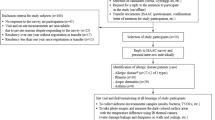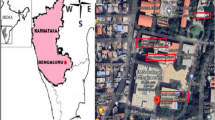Abstract
Strobilurin fungicides are used primarily in fruits and vegetables, but recently, a patent was issued for one strobilurin fungicide, azoxystrobin, in mold-resistant wallboard. This raises concerns about the potential presence of these chemicals in house dust and potential exposure indoors, particularly in young children. Furthermore, recent toxicological studies have suggested that strobilurins may cause neurotoxicity. Currently, it is not clear whether or not azoxystrobin applications in wallboard lead to exposures in the indoor environments. The purpose of this study was to determine if azoxystrobin, and related strobilurins, could be detected in house dust. We also sought to characterize the concentrations of azoxystrobin in new wallboard samples. To support this study, we collected and analyzed 16 new dry wall samples intentionally marketed for use in bathrooms to inhibit mold. We then analyzed 188 house dust samples collected from North Carolina homes in 2014–2016 for azoxystrobin and related strobilurins, including pyraclostrobin, trifloxystrobin, and fluoxastrobin using liquid chromatography tandem mass spectrometry. Detection frequencies for azoxystrobin, pyraclostrobin, trifloxystrobin, and fluoxastrobin ranged from 34–87%, with azoxystrobin being detected most frequently and at the highest concentrations (geometric mean = 3.5 ng/g; maximum = 10,590 ng/g). Azoxystrobin was also detected in mold-resistant wallboard samples, primarily in the paper covering where it was found at concentrations up to 88.5 µg/g. Cumulatively, these results suggest that fungicides present in wallboard may be migrating to the indoor environment, leading to exposure in the residences that would constitute a separate exposure pathway independent of dietary exposures.
This is a preview of subscription content, access via your institution
Access options
Subscribe to this journal
Receive 6 print issues and online access
$259.00 per year
only $43.17 per issue
Buy this article
- Purchase on Springer Link
- Instant access to full article PDF
Prices may be subject to local taxes which are calculated during checkout


Similar content being viewed by others
References
Esser L, Yu CA, Xia D. Structural basis of resistance to anti-cytochrome bc(1) complex inhibitors: implication for drug improvement. Curr Pharm Des. 2014;20:704–24.
Bruhl CA, Schmidt T, Pieper S, Alscher A. Terrestrial pesticide exposure of amphibians: an underestimated cause of global decline? Sci Rep. 2013;3:1135.
Hooser EA, Belden JB, Smith LM, McMurry ST. Acute toxicity of three strobilurin fungicide formulations and their active ingredients to tadpoles. Ecotoxicology. 2012;21:1458–64.
Jia W, Mao LG, Zhang L, Zhang YN, Jiang HY. Effects of two strobilurins (azoxystrobin and picoxystrobin) on embryonic development and enzyme activities in juveniles and adult fish livers of zebrafish (Danio rerio). Chemosphere. 2018;207:573–80.
Li H, Cao FJ, Zhao F, Yang Y, Teng MM, Wang CJ, et al. Developmental toxicity, oxidative stress and immunotoxicity induced by three strobilurins (pyraclostrobin, trifloxystrobin, and picoxystrobin) in zebrafish embryos. Chemosphere. 2018;207:781–90.
Jiang JH, Shi Y, Yu RX, Chen LP, Zhao XP. Biological response of zebrafish after short-term exposure to azoxystrobin. Chemosphere. 2018;202:56–64.
Zubrod JP, Bundschuh M, Arts G, Bruhl CA, Imfeld G, Knabel A, et al. Fungicides: an overlooked pesticide class? Environ Sci Technol. 2019;53:3347–65.
Pearson BL, Simon JM, McCoy ES, Salazar G, Fragola G, Zylka MJ. Identification of chemicals that mimic transcriptional changes associated with autism, brain aging and neurodegeneration. Nat Commun. 2016;7:11173.
Regueiro J, Olguin N, Simal-Gandara J, Sunol C. Toxicity evaluation of new agricultural fungicides in primary cultured cortical neurons. Environ Res. 2015;140:37–44.
Kassotis CD, Hoffman K, Stapleton HM. Characterization of adipogenic activity of house dust extracts and semi-volatile indoor contaminants in 3T3-L1 cells. Environ Sci Technol. 2017;51:8735–45.
Luz AL, Kassotis CD, Stapleton HM, Meyer JN. The high-production volume fungicide pyraclostrobin induces triglyceride accumulation associated with mitochondrial dysfunction, and promotes adipocyte differentiation independent of PPARgamma activation, in 3T3-L1 cells. Toxicology. 2018;393:150–9.
Tuttle AH, Salazar G, Cooper EM, Stapleton HM, Zylka MJ. Choice of vehicle affects pyraclostrobin toxicity in mice. Chemosphere. 2019;218:501–6.
Azoxystrobin MoldRetardant 2.08 SC, 2004.
Hoffman K, Hammel SC, Phillips AL, Lorenzo AM, Chen A, Calafat AM, et al. Biomarkers of exposure to SVOCs in children and their demographic associations: the TESIE study. Environ Int. 2018;119:26–36.
Phillips AL, Hammel SC, Hoffman K, Lorenzo AM, Chen A, Webster TF, et al. Children’s residential exposure to organophosphate ester flame retardants and plasticizers: investigating exposure pathways in the TESIE study. Environ Int. 2018;116:176–85.
Antweiler RC, Taylor HE. Evaluation of statistical treatments of left-censored environmental data using coincident uncensored data sets: I. Summary statistics. Environ Sci Technol. 2008;42:3732–8.
US EPA. Exposure factors handbook 2011 edition. US environmental protection agency, Washington, DC, EPA/600/R-09/052F, 2011.
Hammel SC, Lavasseur JL, Hoffman K, Phillips AL, Lorenzo A, Chen A, et al. Children’s exposure to phthalates and non-phthalate plasticizers in the home: the TESIE study. Environ Int. 2019;132:105061.
Stapleton HM, Misenheimer J, Hoffman K, Webster TF. Flame retardant associations between children’s handwipes and house dust. Chemosphere 2014;116:54–60.
Morgan MK, Wilson NK, Chuang JC. Exposures of 129 preschool children to organochlorines, organophosphates, pyrethroids, and acid herbicides at their homes and daycares in North Carolina. Int J Environ Res Public Health. 2014;11:3743–64.
Winter CK. Chronic dietary exposure to pesticide residues in the United States. Int J Food Contam. 2015;2:11.
Acknowledgements
Funding for this research was provided by grants from the U.S. Environmental Protection Agency (Grant 83564201) and NIEHS (R01 ES016099). Additional support for ALP and JR was provided by NIEHS (T32-ES021432 and P42ES010356, respectively). We also thank our participants for opening their homes to our study team and helping us gain a better understanding of children’s exposures to pesticides.
Author information
Authors and Affiliations
Corresponding author
Ethics declarations
Conflict of interest
The authors declare that they have no conflict of interest.
Additional information
Publisher’s note Springer Nature remains neutral with regard to jurisdictional claims in published maps and institutional affiliations.
Rights and permissions
About this article
Cite this article
Cooper, E.M., Rushing, R., Hoffman, K. et al. Strobilurin fungicides in house dust: is wallboard a source?. J Expo Sci Environ Epidemiol 30, 247–252 (2020). https://doi.org/10.1038/s41370-019-0180-z
Received:
Revised:
Accepted:
Published:
Issue Date:
DOI: https://doi.org/10.1038/s41370-019-0180-z



